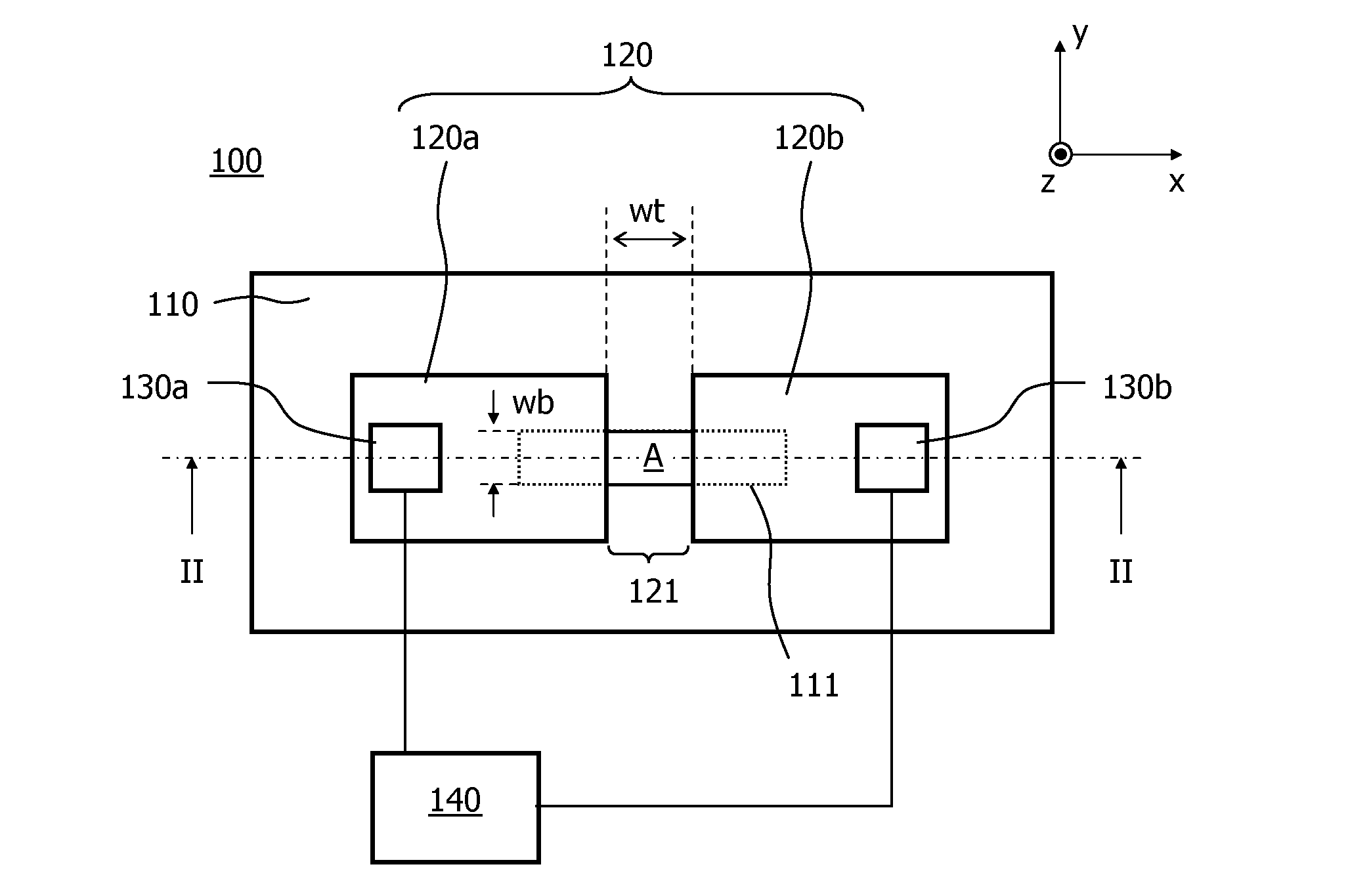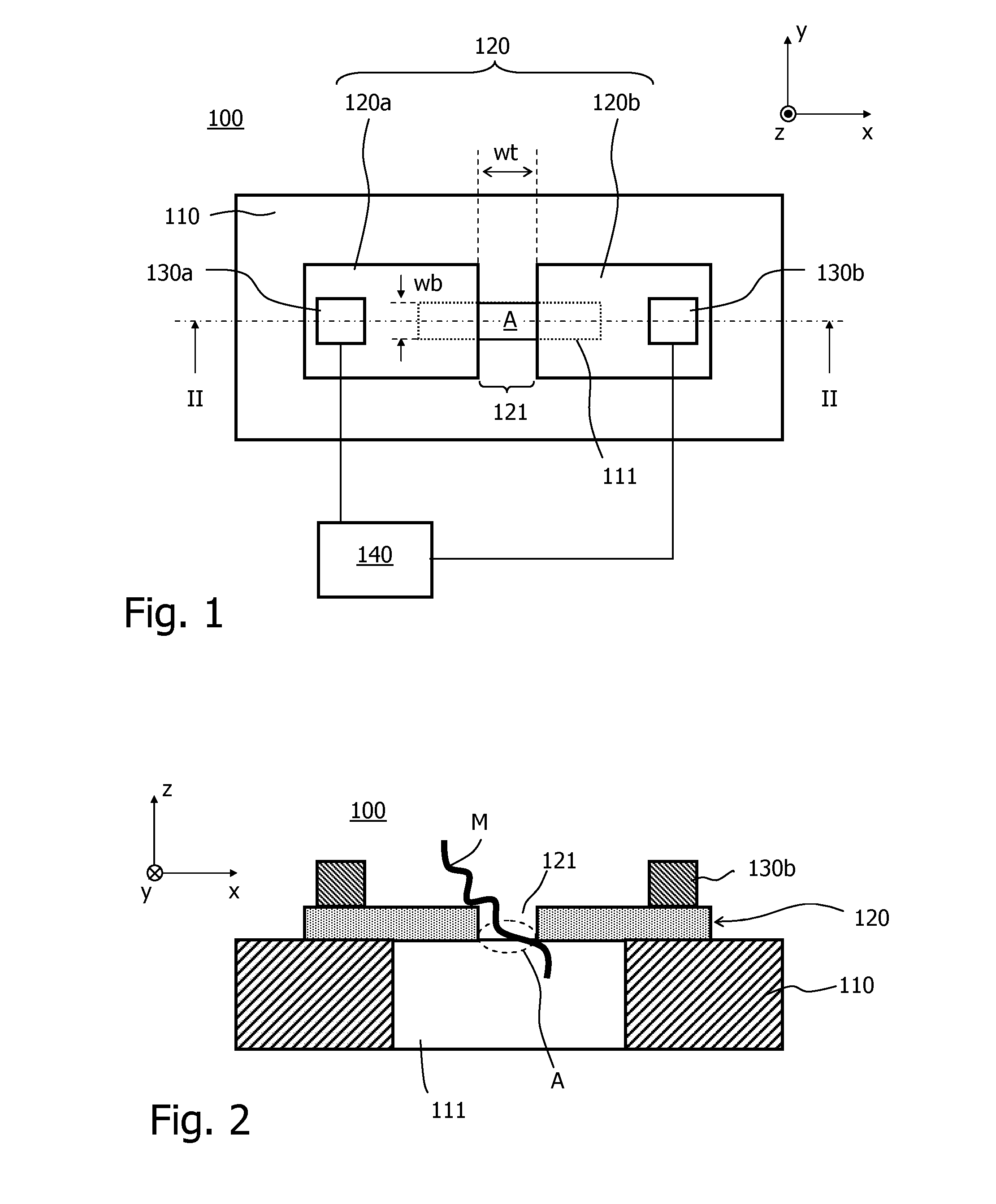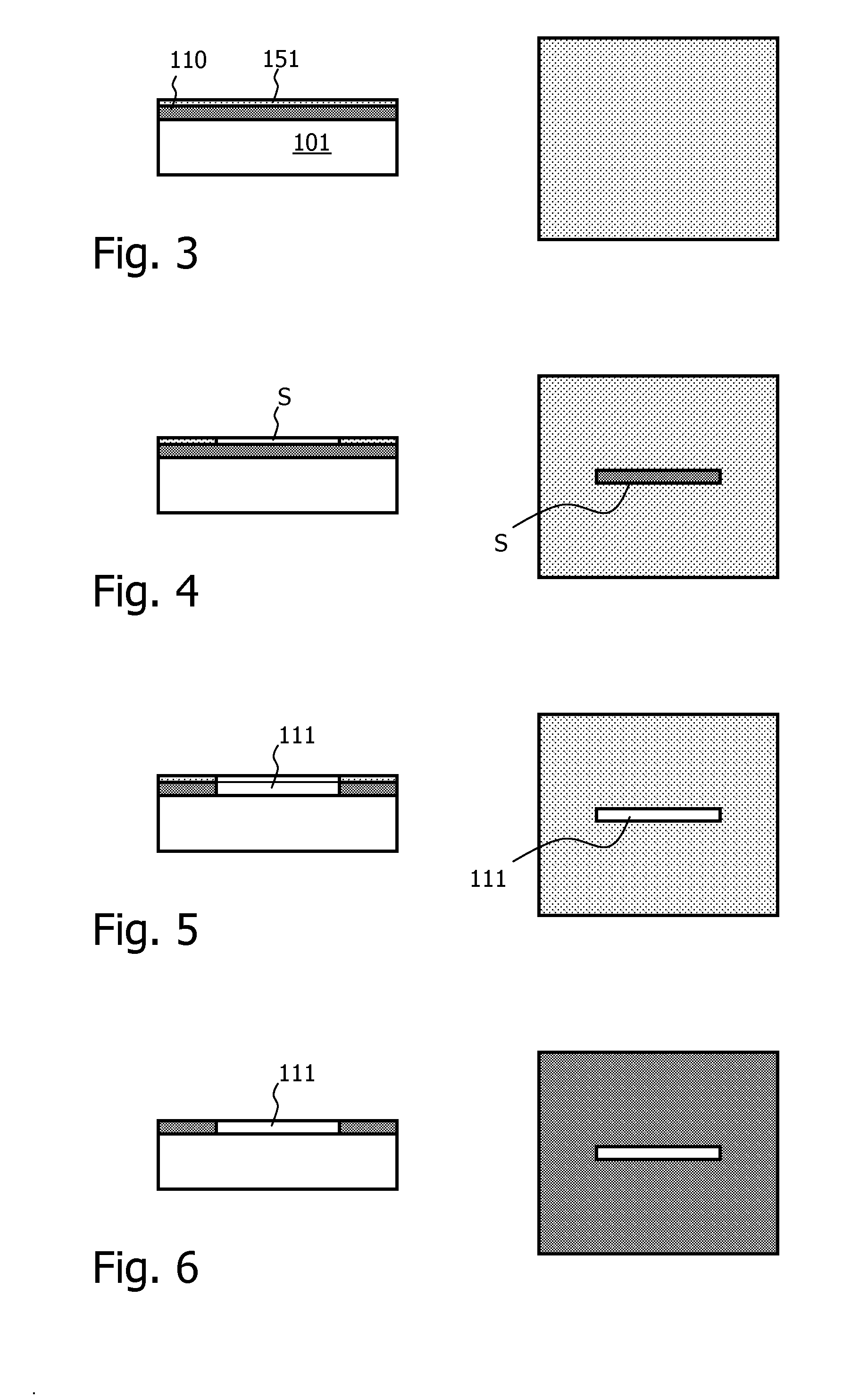Apparatus for the processing of single molecules
a technology of apparatus and single molecules, applied in the field of apparatus and a single molecule processing method, can solve the problems of high electrical conductivity of graphene layer, small conductivity change induced by a molecule, and mechanically inability of associated apparatus, etc., to prevent the flow of undesired electrical current, reduce the effect of asymmetry and small apertur
- Summary
- Abstract
- Description
- Claims
- Application Information
AI Technical Summary
Benefits of technology
Problems solved by technology
Method used
Image
Examples
Embodiment Construction
[0044]The U.S. 2010 / 0327847 A1 describes the use of a graphene layer / electrode in nanopore sequencing. It is proposed in this patent that a nanopore is embedded in the graphene, leaving areas besides the nanopore.
[0045]However, it is already known that graphene has a very high conductivity. A mobility of around 10,000 cm2 / Vs at room temperature has been reported (K. S. Novoselov, A. K. Geim, S. V. Morozov, D. Jiang, Y. Zhang, S. V. Dubonos, I. V. Grigorieva, and A. A. Firsov, “Electric Field Effect in Atomically Thin Carbon Films”, Science, 306 (204) 666-669). Hence, the current in the device of the U.S. 2010 / 0327847 A1 will not or only hardly be modulated and the devices will have a poor effectiveness in determining the bases passing through the nanopore, as nearly all of the current will pass by the nanopore in the remaining graphene.
[0046]In view of this, it seems to be more effective to use nanogaps, as proposed by Postma (H. W. Ch. Postma, “Rapid sequencing of individual DNA mo...
PUM
| Property | Measurement | Unit |
|---|---|---|
| thickness | aaaaa | aaaaa |
| thickness | aaaaa | aaaaa |
| width | aaaaa | aaaaa |
Abstract
Description
Claims
Application Information
 Login to View More
Login to View More - R&D
- Intellectual Property
- Life Sciences
- Materials
- Tech Scout
- Unparalleled Data Quality
- Higher Quality Content
- 60% Fewer Hallucinations
Browse by: Latest US Patents, China's latest patents, Technical Efficacy Thesaurus, Application Domain, Technology Topic, Popular Technical Reports.
© 2025 PatSnap. All rights reserved.Legal|Privacy policy|Modern Slavery Act Transparency Statement|Sitemap|About US| Contact US: help@patsnap.com



